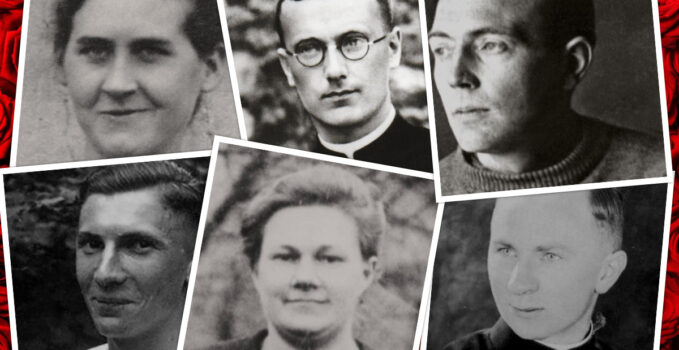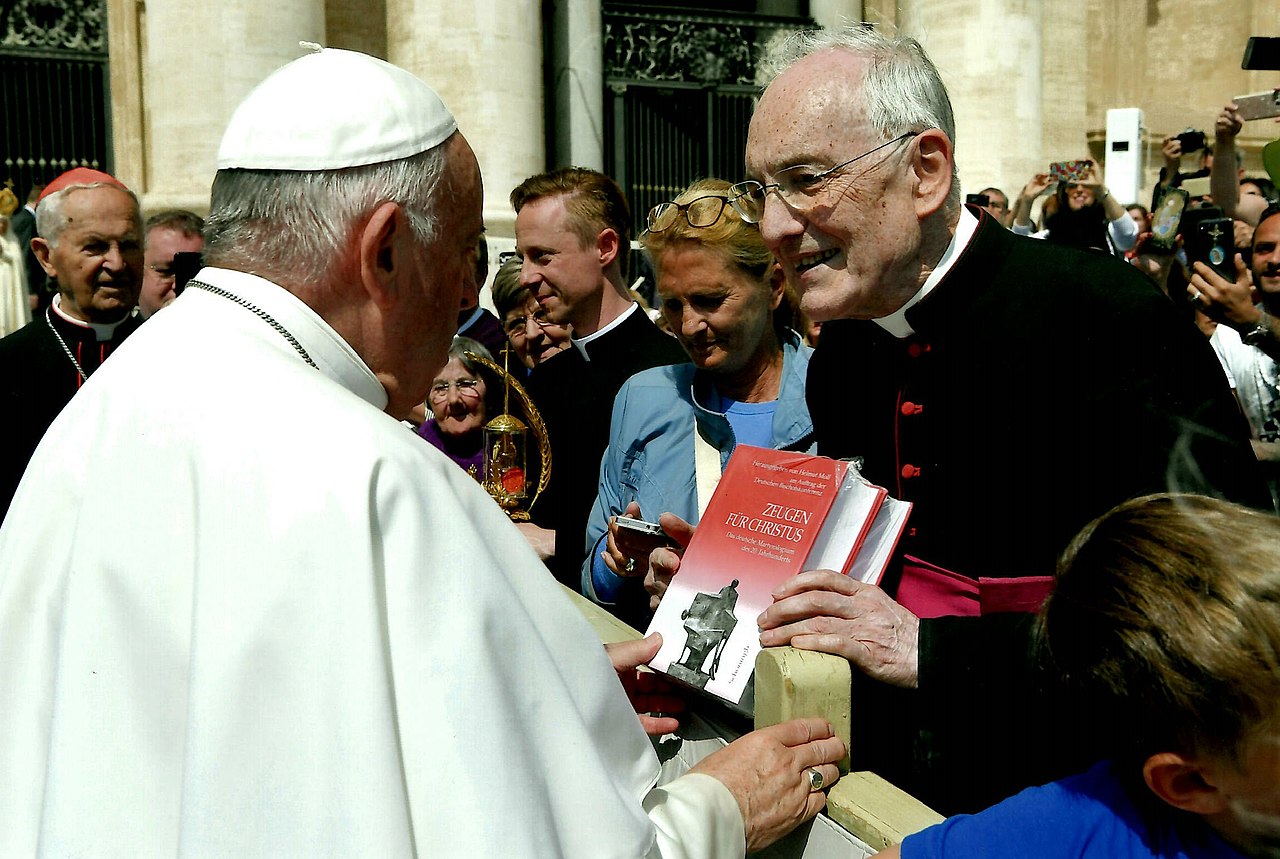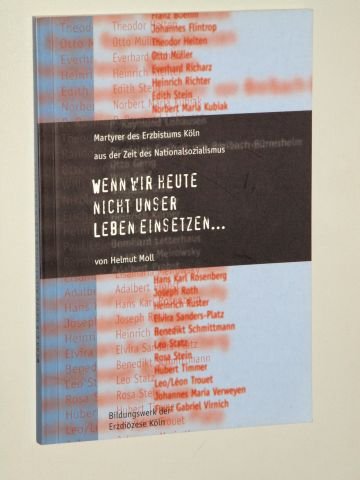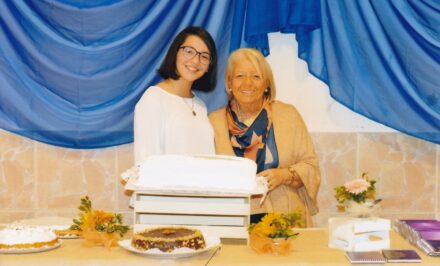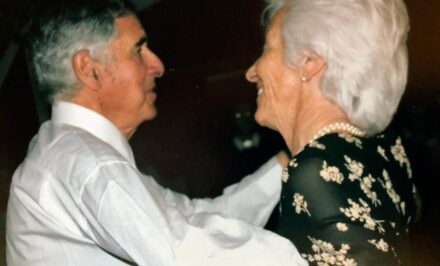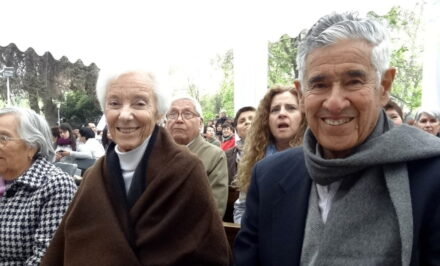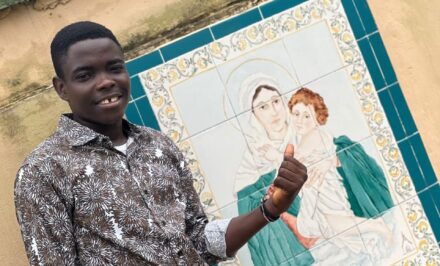GERMANY, Maria Fischer •
“Taking up your attachment to Schoenstatt, I would like to point out to you, united to Maria Rast, Schoenstatt witnesses of blood and faith from the time of National Socialism, who should be snatched from oblivion,” writes Prelate Dr. Helmut Moll, Cologne, precisely on the 95th anniversary of the priestly ordination of one of these witnesses of blood, martyrs: Fr. Franz Reinisch. —
In his letter, to which he encloses extensive documentary material, Prelate Dr. Moll asks “to snatch these people from oblivion through lectures and readings.” We are doing what we do best: writing an article and translating it into several languages – also as a birthday present for Dr. Helmut Moll, who was born in Euskirchen and would celebrate his 79th birthday on July 2, 2023.
Professor Dr. Helmut Moll is the German Bishops’ Conference’s commissioner for the 20th Century Martyrology, a comprehensive index of the lives of German and German-born Catholic martyrs, which Moll compiled in collaboration with historians and other experts from German dioceses and religious orders. He personally presented the seventh edition of the work to Pope Francis on May 8, 2019.
Witnesses for Christ
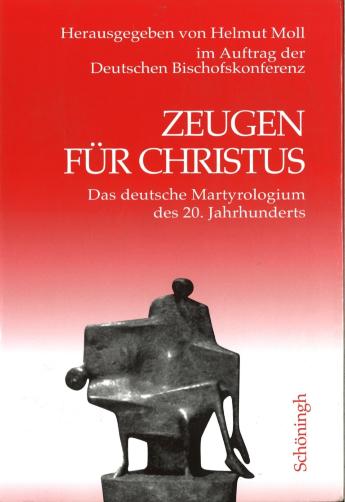 “In 1999, Schöningh-Verlag published the two-volume work “Witnesses for Christ. The German Martyrology of the 20th Century” in its first edition,” writes Prelate Moll. “Pope John Paul II had commissioned the Church to ensure that the testimonies of those who held fast to their faith in the persecutions of the 20th century and accepted death for it are not lost. The German Bishops’ Conference commissioned me to coordinate and edit the work. Some 160 experts from Germany and abroad have written the biographical articles, which are assigned to the four categories “Victims of Violence under National Socialism (1), Communism (2), Purity Martyrdoms (3), and Victims of Violence in Missionary Areas (4).”
“In 1999, Schöningh-Verlag published the two-volume work “Witnesses for Christ. The German Martyrology of the 20th Century” in its first edition,” writes Prelate Moll. “Pope John Paul II had commissioned the Church to ensure that the testimonies of those who held fast to their faith in the persecutions of the 20th century and accepted death for it are not lost. The German Bishops’ Conference commissioned me to coordinate and edit the work. Some 160 experts from Germany and abroad have written the biographical articles, which are assigned to the four categories “Victims of Violence under National Socialism (1), Communism (2), Purity Martyrdoms (3), and Victims of Violence in Missionary Areas (4).”
The seventh edition, revised and updated, was delivered in mid-March 2019, and the Italian version by Edizioni Paoline in Milan was presented in Rome on March 20, 2007.
A “cloud of witnesses” from and close to the Schoenstatt Movement
Dr. Moll enumerates persons who individually almost all have already received one or more articles on schoenstatt.org. Together they become here a “cloud of witnesses” of a following of Christ without ifs and buts.
- Father Alfons Mersmann, who died in the Buchenwald concentration camp in 1945, was able to tell of the “miraculous apparitions of the Blessed Mother in Fatima”.
- Blessed Karl Leisner (* 1915), a new priest from Münster, lived out of a deep devotion to Mary. On a trip to Freiburg, he entrusted his intentions and his vocation to the Mother Thrice Admirable of Schoenstatt in the Original Shrine. During Holy Week 1933, he participated in a retreat in Schoenstatt. After a stay in the Dachau concentration camp, he died in 1945 in the Planegg sanatorium near Munich. The canonization process was opened in 2007 (cf. Vol. I, pp. 523-529).
- Two members of the Institute Our Lady of Schoenstatt: Charlotte Holubars, born in 1883 in Striegau/Lower Silesia, became an elementary school teacher in Heusweiler near Saarbrücken, where she is vividly remembered. During a vacation in Frankenstein (Silesia), she met Father Joseph Kentenich, whose spirituality attracted her. In Schoenstatt she sealed the Covenant of Love in 1929. In 1937 she moved to Schoenstatt. When Father Kentenich’s writings were found during a house search, she was sent to prison in Koblenz and from there to the Ravensbrück concentration camp, where she died on November 9, 1944 (cf. Vol. II, pp. 1084-1087).
- Maria Laufenberg (* 1910), a secondary school teacher from Lorraine, also belongs to the community of Schoenstatt women. She became acquainted with the Schoenstatt Movement in 1935, which she soon joined. Four years later she sealed her Covenant of Love in Schoenstatt. Because she was committed to the Confessional School, she soon became sidelined, had to take a cure, and remained ill. She died on March 7, 1944, in the Kreuser Convent in Mechernich (Eifel) (cf. Vol. II, pp. 1087-1090).
- In the Dachau concentration camp, Blessed Chaplain Alois Andritzki, a student in Paderborn (cf. Vol. I, pp. 190-192), and Blessed Chaplain Gerhard Hirschfelder (cf. Vol. I, pp. 842-844) joined the Schoenstatt priests’ group.
- The Paderborn diocesan priest Heinrich König (* 1900 Frankfurt) found his personal ideal in the Blessed Mother. “De Maria nunquam satis” became his motto in 1927. In August 1927 he placed himself at the service of Mary in the Chapel of Grace in Paderborn. Because of his anti-national socialist stance, the young chaplain soon fell into the clutches of the Secret State Police. He was soon sent to the Dachau concentration camp, where he perished on June 24, 1942 (cf. Vol. I, pp. 574-577).
- The Austrian Pallottine Father Franz Reinisch from Vorarlberg saw in the Marian Movement “a new flowering of the Church”. He refused to take the oath of allegiance in Bad Kissingen (Diocese of Würzburg) on April 15, 1942, was then arrested and taken via Würzburg to Berlin, where he was sentenced to death on July 7, 1942. The Diocese of Trier opened the beatification process on May 28, 2013, which was concluded at the diocesan level on June 28, 2019 (cf. Vol. II, pp. 1014-1018).
- A “fiery apostle of Mary” also wanted to be the Pallottine Father Albert Eise (*1896) from Oeffingen near Stuttgart, who became editor of the magazine “Queen of Apostles” in 1936. He lived for a time in Freising. Arrested in Koblenz in 1941, he was sent to Dachau concentration camp, where he died on September 3, 1942 (cf. Vol. II, pp. 999-1002).
- Also Pallottine Fathers Fr. Dr. Max Joseph Größer of Hannover (cf. Vol. II, pp. 1002-1004), Blessed Richard Henkes of Ruppach (Westerwald) (cf. Vol. II, pp. 1005-1007), who was beatified in Limburg Cathedral on September 15, 2019 (in my presence), Br. Johannes Leodegar Kremer of Mannheim (cf. Vol. II, pp. 1010-1013). Vol. II, pp. 1010-1012), Franz Xaver Maier from the district of Straubing (diocese of Regensburg) (cf. Vol. II, pp. 1012f.) and Br. Eduard Ossowski from West Prussia (cf. Vol. II, pp. 1013f.).
- Father Franz Fränznick (Archdiocese of Freiburg) had come closer to the Schoenstatt Movement through his “fervent devotion to Mary”. He died in the Dachau concentration camp on January 27, 1944 (cf. Vol. I, pp. 257-260).
- Pallottine Brother Paul Krawczewicz (* 1907 Bochum) was arrested in 1944 while taking care of prisoners of war and forced laborers in Stuttgart and was sent via the Gestapo prison Brauweiler near Cologne to the concentration camp Buchenwald, where he died on March 11, 1945 in the subcamp Ohrdruf. Since 2003, the beatification process has been underway for him (cf. Vol. II, pp. 1008-1010).
Mary as a sign of hope
Moll’s book “Martyrdom and Truth. Witnesses of Christ in the 20th Century” (Weilheim-Bierbronnen 2005; 7th edition 2020) contains the detailed chapter “Consolation in Affliction. The Blessed Virgin Mary as a Sign of Hope” during the Nazi era, which delves into the names associated with the Blessed Virgin Mary. In it, Blessed Father Georg Häfner, St. Edith Stein, Blessed Fr. Richard Henkes, Dr. Ruth Kantorowicz, Father Albert Eise SAC, Blessed Karl Leisner, Father Karl Borromäus Kramer, Father Alfons Mersmann, Father Friedrich Lorenz and the Austrian Father Franz Reinisch are presented in detail.
In the “small” Martyrology, “If we do not dedicate our lives today…”. Märtyrer des Erzbistums Köln aus der Zeit des Nationalsozialismus” (Cologne 1998; ²1999; ³2000; ISBN 3-931739-09-0; 102 pages), 33 witnesses of faith are presented – among them Sr. Teresia Benedicta a Cruce (Dr. Edith Stein) as well as Otto Gerig and Joseph Roth, who took refuge in Mary while in prison.
If we don’t put our lives on the line today
21st century, almost ten years after the celebration of 100 years of the Covenant of Love. Except for Schoenstatters in Cuba, Venezuela or Nicaragua, no one risks his life talking about Christ and acting out of Christian conviction. No chance, then, to be witnesses of Christ? Is the only recourse left to those who gave testimony under a regime of injustice?
Concentration camps, torture, prison (hardly) threaten anyone, but the cause of Jesus, the cause of Schoenstatt experiences a “pagan fear” of testimony in the truest sense of the word. For example, that vague fear of “what others think of me” when I say something, when I ask something, when I take a stand. Certainly not the most serious example: What will others think of me if I leave a comment on schoenstatt.org? Share an article in my networks? Talk about it? Or even initiate a conversation about it?
As a child and adolescent, I asked my parents and grandparents and their generation: Why did you remain silent? And I was allowed to ask one or the other: Why did you talk, why did you risk your life? To this day, these are my heroes and my yardstick.
In view of a Franz Reinisch, a Heinrich König, a Karl Leisner, a Charlotte Holubars: Why such fear of personal public witness?
Come, Holy Spirit, and tear down the walls of fear.
More information about the Martyrology of the 20th Century online (German)
Original: German, 01.06.2023. Translation: Maria Fischer @schoenstatt.org


